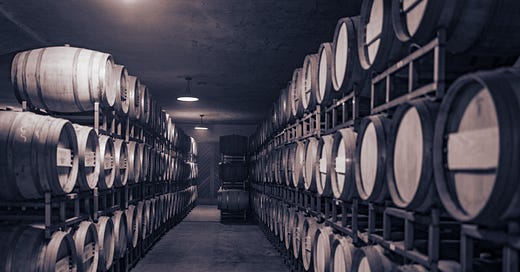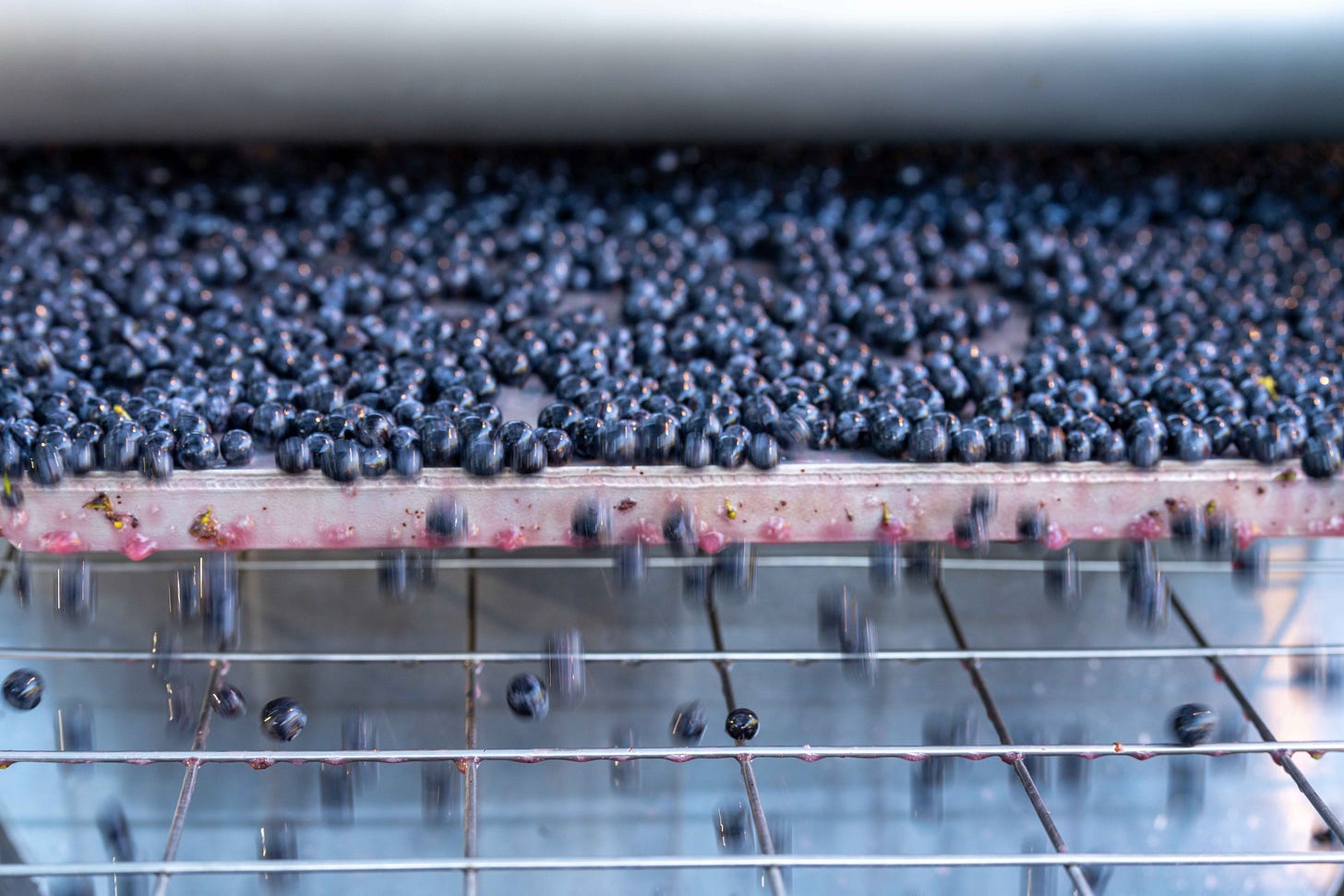As 2023 draws to a close, we're dedicating the final two weeks to a retrospective countdown of the year's most-read stories. Spanning a broad spectrum of subjects, these pieces mirror the varied curiosities of our audience and pave the way for an exciting 2024. Join us as we revisit these highlights.
Original run date: Oct. 4, 2023
Yesterday we delved into the ramifications of severe supply and demand imbalances, illustrating how they can be the catalyst for rising legal disputes, community strife and business failures. Today we shift our focus to explore how inadequate or incomplete data can compromise strategic decision-making and impact long-term planning.
NAPA VALLEY, Calif. — Visit Napa Valley's recently released industry summary for the fiscal year 2023 projects a bright future for the region. Despite low hotel occupancy rates, the summary indicates that revenue is at an all-time high. It also anticipates a rebound in international tourism, particularly from China, and forecasts that increased corporate spending will offset expected lower individual visitor rates. However, this report — hindered by remaining limitations brought on by the pandemic — may underrepresent key challenges such as fluctuating tourism rates, economic uncertainties, demographic shifts, staffing issues and generational changes.
In 2012 the Napa Valley saw about 2.9 million visitors. This number grew to nearly 4 million visitors by 2018 — a growth of nearly 30%. This explosive growth led to a rapid expansion in the number of wineries, hotels, and restaurants and was based on the assumption that such growth would continue indefinitely. However, the landscape has evolved significantly since then, and the consequences of this disconnect are beginning to surface, further complicated by economic factors such as a global slowdown and persistent inflation.
Summary of the key points in this article:
Enhanced real-time data analytics are essential for guiding businesses, community stakeholders, and policymakers toward more informed and effective decision-making.
Tourism in Napa Valley grew by 30% from 2012 to 2018, resulting in a surge of wineries, hotels and restaurants.
Hotel occupancy rates have fallen from 71.7% in 2019 to 61% in 2023. Revenue increase of 19.1% is largely offset by high inflation rates.
Betting on Chinese tourism is risky due to China's economic instability and stringent travel restrictions.
U.S. consumer confidence is on the decline, marked by concerns over rising interest rates, surging oil prices and higher costs for big-ticket items.
Canada's stagnant economy and a strong U.S. dollar may deter Canadian visitors. Mexico, however, shows promise as an emerging market for Napa Valley tourism.
Market saturation is an issue, with hotel and resort rooms expected to nearly double, while two local hotels recently filed for bankruptcy.
Housing affordability remains a major issue for the local workforce, with home values rising significantly while average salaries remain modest.
Changing consumer preferences have led to declining wine sales, driven by younger generations' focus on healthier lifestyles and alternative beverages.
There is a systemic shift away from wine, posing long-term challenges for Napa Valley's economic business model.
Inflation and its impact on revenue
The Visit Napa Valley's 2023 report indicates that the occupancy rate for fiscal year 2023 stood at 61%, a decline from 71.7% in 2019. Despite this decrease, revenue rose by 19.1% due to higher room rates. However, the report fails to factor in the rate of inflation, which, according to the Bureau of Labor Statistics, was 3.7% in August 2023 and was above 7% for much of the early part of the year. When this inflation rate is accounted for, the real gains largely vanish. The high operational costs in Napa Valley further compound this issue, pushing any potential revenue gains into negative territory.
Chinese tourism: a risky bet
For years China was seen as a burgeoning market for wine consumption and tourism, an outlook that now appears increasingly unrealistic. After years of growth, in 2021 wine exports to China declined by more than 30%, and the forecast for 2023 remains pessimistic. Visit Napa Valley projects a significant increase in Chinese visitation by 2024 — a sector that disappeared during the pandemic due to China's stringent zero-COVID policy. This projection fails to account for several major obstacles.
Recent indicators suggest that the Chinese economy is far from stable. After a brief recovery following the lifting of pandemic restrictions in early 2023, troubling signs have emerged: stagnant GDP, falling exports, decelerating imports and a consumer price index drifting into deflationary territory. Additionally, the yuan is depreciating against the U.S. dollar. New loan issuance in China has hit its lowest point since 2009, and the real estate market is in freefall. Leading developers such as Evergrande and Country Garden are facing financial crises, defaulting on debt payments. In January 2021, 95% of China's property offshore high-yield bonds were valued at least 70 cents on the dollar; by August 2023, nearly 95% had plummeted to a valuation of 10 cents to 20 cents, relegating them to "junk" status.
Local Chinese governments are on the brink of financial collapse, overwhelmed by both overt and hidden debt. Billions were squandered during the pandemic on unproductive infrastructure projects, and urban youth unemployment rates hit 20% in June, with the National Bureau of Statistics subsequently ceasing to disclose those figures.
China has also implemented strict travel restrictions that require the disclosure of an individual's net worth to curb capital flight. This makes discretionary spending on items such as wine tourism less likely to be a priority for Chinese consumers in the foreseeable future. There is also an increasingly contentious trade war between China and the United States. Additionally, wine consumption in China is declining, with estimates pointing to an annual decrease of 260 million bottles.
Decline in U.S. consumer confidence
The report suggests that tourism will increase to 2019 levels and that these visitors will have generally the same purchasing behaviors. Both assumptions are likely overly optimistic.
Every month the University of Michigan's Surveys of Consumers releases reports that assess U.S. consumer sentiment on the economy, personal finances and buying intentions. These reports offer essential data for policymakers, businesses and investors. About 18 months ago the Federal Reserve began raising interest rates. Although the September report shows some consumer relief over the slowing rate of inflation in 2023, it also reveals rising concerns about these interest rates. High prices and interest rates are the main reasons consumers cite for the unfavorable conditions for purchasing big-ticket items such as homes, vehicles and travel.
For businesses, the S&P Global U.S. Composite Purchasing Managers Index provides insight into corporate sentiment. A PMI reading above 50 indicates economic expansion, while a reading below 50 suggests contraction. In September 2023, the PMI dropped to 50.1, marking the fourth consecutive month of decline and signaling stagnation in private-sector activity. Manufacturing is contracting, job creation in the service sector has slowed and business confidence has reached a nine-month low.
Part of this economic pessimism stems from persistent inflation, largely fueled by soaring energy prices. Due to the conflict in Europe and OPEC+'s decision to cut production, oil prices are at historic highs, hovering around $100 per barrel. This has led to decreased travel and business spending. Another consequence is that the value of the U.S. dollar is rising, making U.S. goods and services as well as travel to the United States more expensive compared to options in countries with weaker currencies.
The Canadian and Mexican factor
The report identifies Canada and Mexico as emerging markets for Napa Valley tourism. While Mexico's economy shows promise, the outlook for Canada is less optimistic. Despite a 3% population growth, largely due to immigration, Canada's GDP has remained stagnant. This implies a decline in per-capita GDP, which, combined with a strong U.S. dollar, is likely to deter Canadians from visiting Napa Valley in the near future.
On the other hand, Mexico presents a more optimistic scenario. Its economy is on an upward trajectory, as evidenced by robust per-capita GDP growth. Moreover, Mexican cultural influence in the United States is growing, exemplified by Modelo, a Mexican beer brand, overtaking Bud Light as America's preferred beer in the summer of 2023. This trend indicates that Mexico may become a progressively significant contributor to visitor numbers in Napa Valley in the foreseeable future.
Other factors
As spotlighted in the recent piece by Napa Valley Features, our region stands on the brink of a period marked by a surge in legal disputes, heightened community tensions and mounting challenges for local businesses. This escalating situation seems primarily driven by an imbalance between supply and demand and is further aggravated by the region's elevated cost of living.
This glut of supply isn't confined to just wineries. According to a recent report from the City of Napa Economic Development Division, in 2017 there were 2,365 total hotel and resort rooms in the city and its surrounding areas. This number is projected to nearly double to 4,424, based on pending lodging applications and conceptual designs. Additionally, many of these new hotels and resorts plan to add restaurants and wine-tasting rooms, exacerbating market saturation. Even so, there are headwinds as highlighted by two local hotels currently in foreclosure.
Tourism remains a crucial industry for Napa Valley, but the region's workforce increasingly finds it challenging to afford living here. As of 2023, according to Zillow, the average home value in Napa County has surged to $903,189, up from around $550,000 in 2015, a 40% increase. Meanwhile, the average annual salary in the county is currently $63,000, according to ZipRecruiter. So a couple earning the median salary who wish to buy a home at the average market price would need to provide a $180,000 down payment. Based on the current 8.35% interest rate for a 30-year fixed mortgage as of Oct. 3, the expected monthly payment, inclusive of taxes and insurance, would approximate $6,300. The take-home pay for a couple both making the average salary would be about $3,700 each, or $7,400 in total, making their monthly mortgage payment 85% of their total income.
Wine, once America's second alcoholic beverage of choice behind beer, has recently been displaced by spirits. This decline in demand is especially noticeable among younger generations who are exploring alternatives such as non-alcoholic drinks and an array of craft cocktails. Additionally, the rise in wellness culture and a focus on healthier lifestyles have fueled greater interest in sobriety, further reducing wine sales. This isn't just a fleeting trend but represents a more systemic shift that could have long-lasting implications for the Napa Valley.
Moving forward
In the Napa Valley wine and tourism aren't just industries; they're the economic bedrock. Yet navigating today's complexities isn't as simple as relying on historic trends. Outdated economic forecasts could mislead businesses, community stakeholders and policymakers.
The problem isn't just an oversaturated market with too many wineries; it's also a diminishing consumer appetite for wine — two variables that neither clever marketing nor regulatory measures can easily rectify. While businesses might achieve gains through superior customer service, a commitment to quality and strong community engagement, the definitive impact of current market trends on Napa Valley's long-term prosperity and quality of life is more uncertain now than at any recent time.
Tim Carl is a Napa Valley-based photojournalist.









and I often wonder what will happen to all the tourist industry in Napa when the gut of wine is greater than the income from tourist. So many other regions are growing grapes cheaper than our county does.